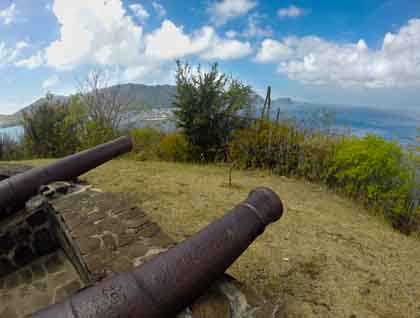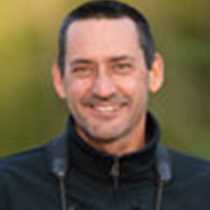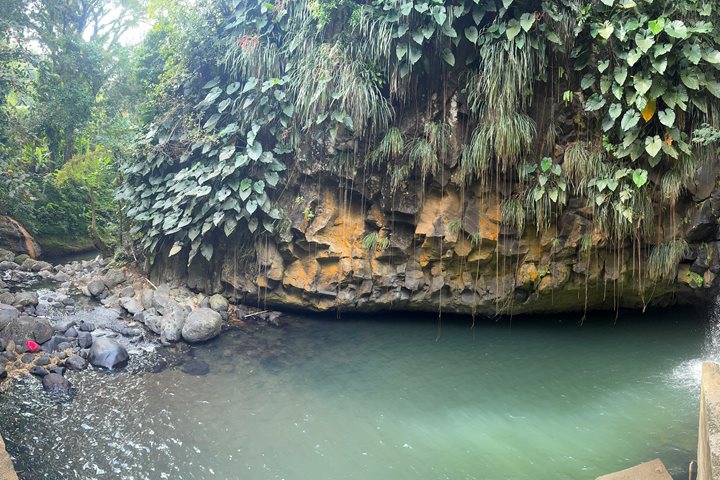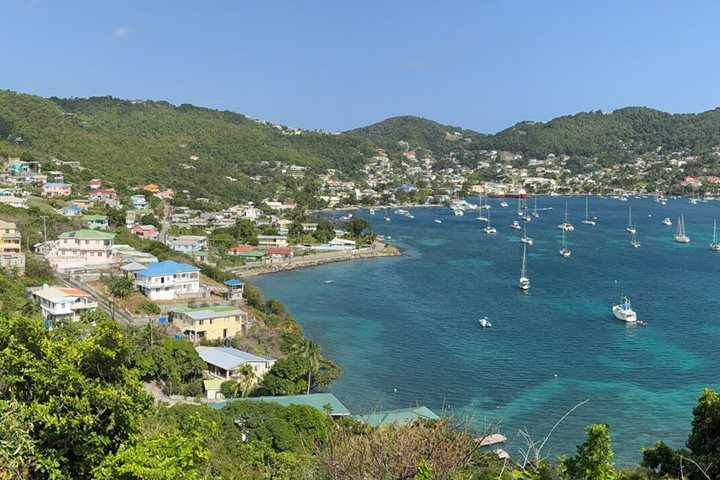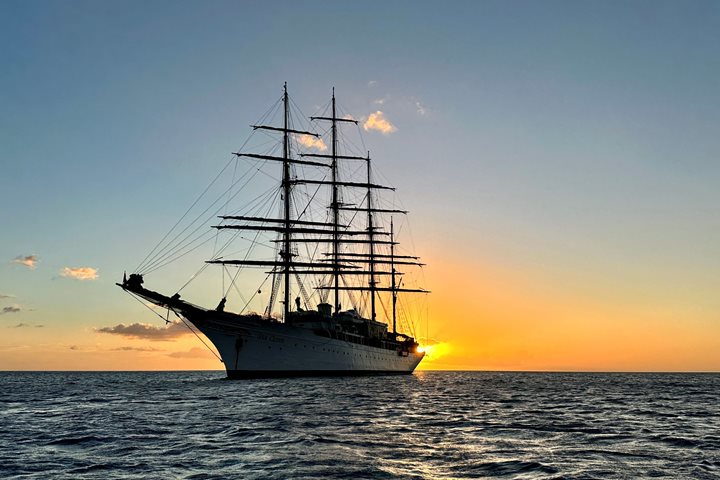We hauled anchor at 4:00 a.m. and sailed from Union Island in the Tobago Cays to the beautiful island of Bequia reaching Admiralty Bay by 7:00 a.m. Bequia was settled first by the Taino and then Carib Indians. Scots were bought over as indentured servants in some numbers in the early 18th century and they have remained. The demographics of Bequia is thus unlike many of the other islands we have visited with a substantial Euro-American population. Like all the islands we have visited, however, the races did mix. Here in Bequia we have the origin of a uniquegroup of people called “Grafuna,” resulting from a Carib/African mix. They are sometimes called “Black Carib.” I cannot testify to my following etymology but it sounds to me as if the word “Garafuna” may be a dialect expression of “Caribe-fumé” with “fume” suggesting the darkening of the skin when the races mixed. They were forced off the island of St. Vincent and placed as captives on the tiny islet called Barasloe, which is close to Mustique. They were finally settled by the British in what is today Belize and Honduras.
We landed on the quayside of the lovely small village of Port Elizabeth at 8:45 a.m. and boarded the traditional small pick up trucks for the beginning of our tour. We broke into two groups, staggering our visit to our special destinations so as to provide a better experience. We then drove to the north side of the island to an early defensive battery named Fort Hamilton, where there is battery today of 5 canons (4 English and 1 French). The fort has an association with Alexander Hamilton, the first treasurer of the United States and a native of the Caribbean. His father was from Bequia. Our guides entertained us with local lore and song and pointed out where the whaling station is still located and described the whaling, which still takes place here. Bequians are allowed to take four whales a year. They hunt the humpback whales in open skiffs powered only by sail and with hand thrown harpoons. The nature of the hunting was considered subsistence and since it was not mechanized and practiced for centuries they have been allowed to continue it. Some years they get no whales. Before we left our four guides sang us a traditional island whaling song.
Our next stop was to the turtle sanctuary of “Brother” Orton King. “Brother King,” a former commercial turtle fisherman, came to the realization that overfishing was destroying the turtles, fish and reefs, which he knew as a child. He vowed to help serve the turtles and so began to raise recently hatched hawksbill and green turtles in pools. To date he has released 995 turtles. He catches the baby turtles as they hatch and keeps them in his sanctuary pools until they are 5 years old when he releases them. This year he expects to see his first mature adults return to lay their eggs. He receives no government support for his work and as a result we have always elected to visit him to support his efforts.
Many of us explored the quaint little shops and the lovely Anglican Church of St. Mary’s built in 1824 with its wonderful blue and white interior. Our next stop is always a hit – Jack’s Bar. This famous place sits directly on Princess Margaret Bay and has to be one of the most idyllic spots in all the Caribbean. There we enjoyed all sorts of fruit punches and some, I am told, had rum in them! The water in the bay was coral blue crystalline and one could easily see 20 feet to the bottom.
Tonight we had the Captain’s farewell dinner and drinks on the lido deck beginning at 6:30 p.m. While I always do enjoy the festivities of this dinner I am also a bit saddened, as I have to say goodbye to some wonderful new friends. So let me end with: until we meet under a fair sky and good seas.

